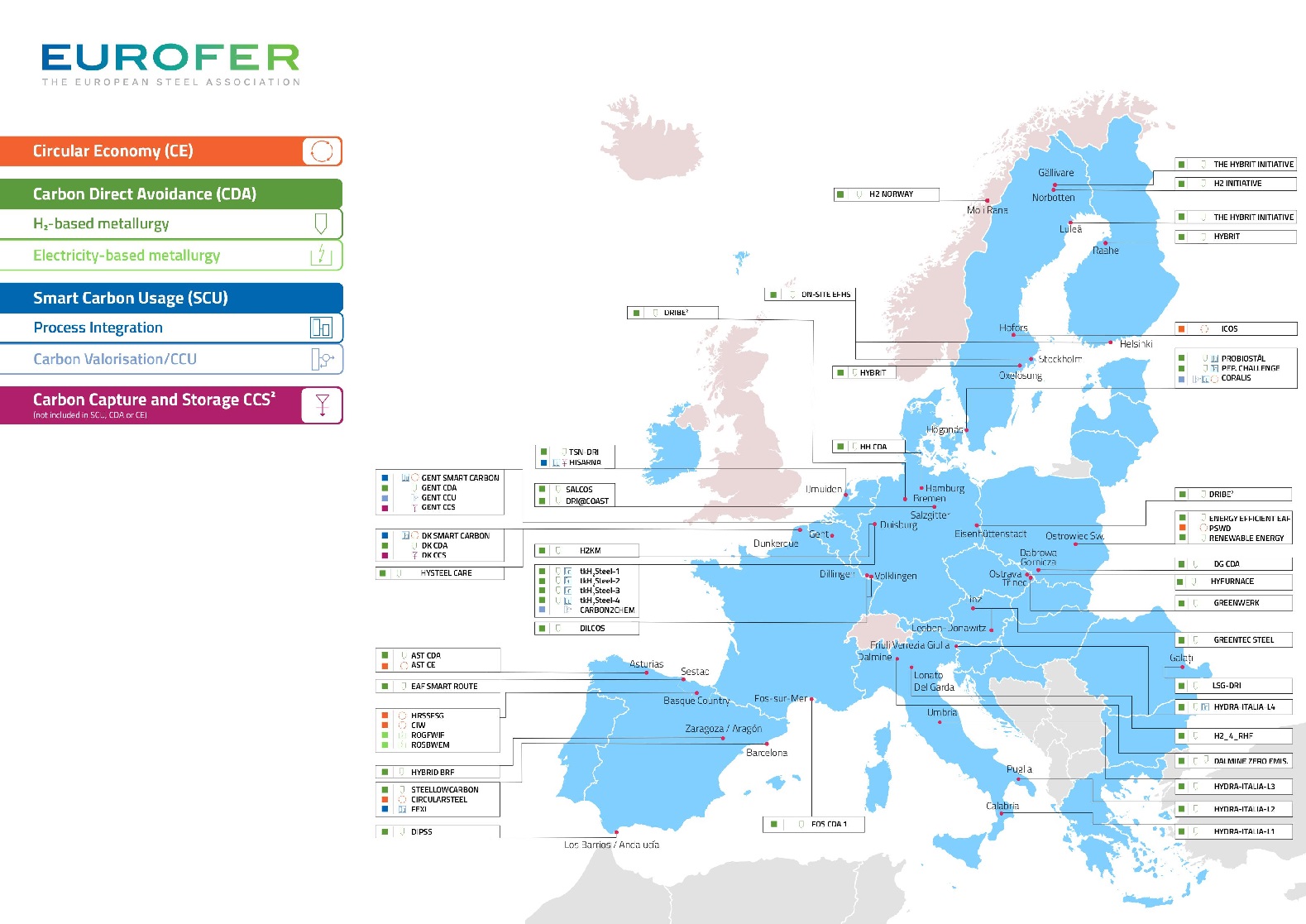The future of the EU steel industry on its way to carbon neutrality has been put at risk by the recent life-threatening vote of the Environment Committee of the European Parliament on the Emissions Trading System (ETS) and the Carbon Border Adjustment Mechanism (CBAM). The upcoming plenary vote on these files will be the last chance to save the transition to green steel from derailing, preserve jobs and secure climate targets.
The ETS and CBAM are two essential elements of the regulatory framework for the transition towards green steel made in Europe. After the recent votes in the Environment Committee, the plenary needs to ensure that both dossiers are suitable for this transition. In particular, the final text should deliver realistic benchmarks for free allocation, a cautious transition between existing carbon leakage measures and the CBAM, a solution for preserving European exports and a cost-efficient trajectory to the higher climate change target of cutting 55% of emissions by 2030, without disproportionate costs.
It is essential that the ETS and the CBAM deliver the agreed 2030 climate targets while supporting investments, preserving effective carbon leakage measures, and avoiding disproportionate costs, capacity closures, and job losses
Following the invasion of Ukraine by Russia, the EU’s climate transition has assumed a more urgent and larger geopolitical dimension. Nonetheless, its short to medium term implementation for EU industry is more challenging than ever. Skyrocketing energy prices, high inflation, soaring carbon prices and raw materials shortages, are already taking a toll on the economy and society at large, including the steel industry. Production curtailments causing idled steel plants and underemployed workers already occurred in the past months, and further disruptions may occur again. Another economic downturn in the steel market, the third in just four years, is looming. The European Commission’s Spring forecast – just released - has slashed growth prospects as well.
In this conjuncture, it is essential that the ETS and the CBAM deliver the agreed 2030 climate targets while supporting investments, preserving effective carbon leakage measures, and avoiding disproportionate costs, capacity closures, and job losses.
With the upcoming plenary vote on ETS and CBAM, members of the Parliament will have a crucial opportunity to shape a regulatory framework which helps the European steel industry translate its ambitious plans into reality and make the EU a world leader in green steel.
Regarding carbon leakage the plenary should urgently amend rules on benchmarks so they reflect the gradual transformation of the sector. Steel companies have 60 low carbon projects in the pipeline, reconverting their conventional technologies and drastically reducing their CO2 footprint by 55% compared to 1990 levels, by 2030. Current proposals would cut free allocation by around 40% overnight in 2026 just because a single site in Europe uses an alternative technology based on natural gas, a transition fuel that in the current situation is highly uncertain. On the contrary, legislation should reward truly new investments without reducing prematurely benchmark values, at least in the first years when such technologies are introduced at industrial scale.
The interaction between existing carbon leakage measures and the CBAM needs a more careful balance. The CBAM – as it will be totally untested when entering into force - should complement free allocation for a transition period so that EU companies can focus financial resources on low carbon projects rather than on compliance costs. This would also reduce the impact on downstream sectors as well as on consumer prices. Moreover, a structural and effective solution for preserving European exports is necessary within the CBAM. Otherwise, we risk losing a large part of EU steel exports that are worth €45 billion, together with the related steelmaking capacity of around 20 million tonnes and 30,000 jobs.
The current proposals on rebasing and Market Stability Reserve add unnecessary volatility to an already volatile market, favouring speculation and pressuring even more the carbon price, which has now reached the level estimated by the Commission for 2030. Short-term spikes of the carbon price also affect electricity prices at a time businesses and households are struggling with skyrocketing energy costs and inflation. Taking out a huge amount of allowances from the market is not necessary for achieving the ETS target for 2030 and beyond and should therefore be rejected.

The 60 green Steel Projects in Europe under threat if no enabling conditions are in place
These changes are indispensable to make the ETS and CBAM fit with the ambitious green steel plans that EU companies have developed. On its path to climate neutrality, the EU steel industry has the ambition to reduce its CO2 emissions by at least 30% by 2030 from current levels in just eight years. This would be a truly new industrial revolution. But it requires massive capital investment of over €30 billion with significantly higher operational costs resulting from decarbonised energy and hydrogen. In parallel, energy infrastructure investments should be accelerated at an unprecedented speed. Access to ferrous scrap urgently needs to be strengthened within the EU, rather than leaking these valuable secondary materials to third countries without comparable environmental and social standards.
This gigantic challenge needs funding support for steel decarbonisation projects across Europe and access to affordable electricity and hydrogen throughout the EU, instead of the imposition of unbearable additional carbon costs.
With the upcoming plenary vote on ETS and CBAM, members of the Parliament will have a crucial opportunity to shape a regulatory framework which helps the European steel industry translate its ambitious plans into reality and make the EU a world leader in green steel.
Sign up to The Parliament's weekly newsletter
Every Friday our editorial team goes behind the headlines to offer insight and analysis on the key stories driving the EU agenda. Subscribe for free here.